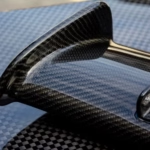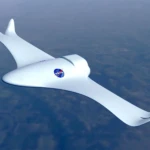Simplify your project: Unveil the CNC Quote Form
In the world of precision manufacturing, obtaining accurate and timely quotes is a key first step in turning design into reality. For engineers, designers and procurement experts, browsing CNC quotation forms can sometimes be difficult. At Greatlight, as experts in CNC machining and full service completion, we understand clarity can save time, cost and headaches. Let’s break down the essentials of CNC quotation forms and why it’s crucial to provide details.
Why the correct form of quotes is important
CNC machining quotes are not just price tags; it is a blueprint for the feasibility and success of your project. Misunderstandings or omissions in the citation phase can lead to delays, unexpected costs or non-compliant parts. A well-structured quote form ensures that you and the manufacturer align on key details on the first day. At Greatlight, our quotation process leverages decades of experience to optimize your part design for productivity and cost-effectiveness.
Key elements of CNC quotation form explain
Part design data: Basic
- What to offer: Most manufacturers require a 3D CAD model (e.g., steps, IGES, SLDPRT) and the included 2D diagram (e.g., PDF or DWG). The drawing must include critical GD&T (geometric dimensions and tolerances), finishing requirements, material specifications, and any critical checkpoints.
- Why it matters: Five-axis machining provides incredible flexibility, but complex geometries require precise models to visualize the settings, minimizing tool collisions and ensuring achievable tolerances. Our team analyzed your model to capture potential manufacturing barriers as early as possible and recommended improvement in productivity (DFM).
Material selection: Performance in line with economics
- What to specify: Exact material grade and form (e.g., 6061-T6 aluminum plate, 316L stainless steel rod). If you are not sure, specify the required performance characteristics (strength, weight, corrosion resistance, thermal performance).
- Why it matters: Materials drive most of the cost (original stock price and machining ability) and affect tool selection, processing strategy and lead time. Greatlight has a wide range of metals, alloys and alloys and sources around the world to ensure competitive pricing and availability.
Quantity: Quantity affects strategy
- What to state: The exact number of parts required for this order, and, if applicable, the potential future volume is estimated.
- Why it matters: Quantity greatly affects unit price and manufacturing methods. Low capacity will often take advantage of more general 3/5-axis settings. Higher quantities prove the rationality of investment in professional fixtures, optimized tool paths, and sometimes even soft tools. Accurate numbers allow us to come up with the most cost-effective production methods.
Surface finishing and post-treatment: Beyond machining
- Details: Specify the required surface finish (e.g., RA 0.8µm, installed), electroplating (e.g., type II anodization, clear), coating (e.g., powder coating RAL 5015), heat treatment (e.g., hardening to 50-55 hrc), or other secondary operations (e.g., assembly, assembly, engraving, engraving, laser, laser marking). Specifications are included (e.g., MIL-A-8625 for anodization).
- Why it matters: Finishing function (corrosion resistance, wear) and aesthetics. As a one-stop solution provider, Greatlight handles all major post-processing (anodization, plating, painting, heat treatment, assembly), simplifies logistics, ensures consistency in quality and saves time to coordinate multiple suppliers.
Key dimensions and tolerances: defined accuracy
- To highlight: Clearly identify mission-critical dimensions and their tolerance ranges (±0.05mm, ±0.001"GD&T benchmark). Distinguish key features from reference dimensions.
- Why it matters: Tighter tolerances require specialized equipment (such as our advanced 5-axis machining center), more detailed setup, inspection (which may involve CMM), and often adds to the cost. Specifying only necessary tight tolerances avoids unnecessary expenses. Our expertise in precision machining ensures that we meet even the most stringent requirements effectively.
Certification and traceability: Compliance Guarantee
- What to communicate: Any required material certification (e.g., mill test reports), process certification (e.g., NADCAP for anodization), final partial inspection report (fairness), lot traceability or industry-specific standards (AS9100, ISO 13485).
- Why it matters: Essential for highly regulated industries (aerospace, medical care, defense). Greatlight maintains strict quality management systems and documentation practices to fully meet these requirements.
Delivery time requirements: Time is everything
- What to show: your "need" date. Distinguish between prototype/fast demand and production planning expectations.
- Why it matters: Delivery time can affect planning priorities and material procurement strategies. While Greatlight prides itself on the flexibility of quickly responding and quickly transforming prototypes, transparency helps us plan resources effectively to meet your deadlines.
- Delivery and Packaging: The Last Step
- What to specify: Shipping destination and any special packaging requirements (ESD safety, desiccant, custom pallets, vacuum seal).
- Why it matters: Ensure that parts arrive safely and ready for use to prevent transportation damage.
The great advantages of citation
Our five-axis CNC capability allows us to generate incredibly complex geometries in settings less than traditional 3-axis machines, often resulting in short lead times and possibly lower fixed costs. Combined with our comprehensive in-house post-processing, we provide unparalleled integration and quality control throughout the process. When you submit a detailed quote form to mark your anniversary, you not only want to get the price; you are activateing a team of engineers dedicated to finding the best manufacturing solutions for your unique challenges.
Conclusion: Authorization through details
Submitting a thorough CNC quotation is an investment in your project’s success. It enables manufacturers like Greatlime to provide you with the most accurate estimates, the best manufacturing strategy and the highest quality results. By understanding and carefully filling each section (from the complex details of the CAD model to the particularity of the post-processing requirements), you can unlock the true potential of our advanced five-axis machining and integrated finishing capabilities. Instead of treating quote form as a barrier, it is a collaborative tool that makes your precision metal parts effective and cost-effective. Ready to experience seamless precision manufacturing? Provide your details and make Greatlight excellence.
Frequently Asked Questions about CNC Quote Form (FAQ)
Q1: I only have one sketch/idea, can I still get a quote?
one: While a rough sketch or description is a starting point, an accurate CNC machining quote does require detailed 3D CAD models and tolerance-related graphics. This model is critical to visualizing parts, identifying potential machining challenges and generating precise tool paths. Contact us through your concepts – Our engineering team can discuss feasibility and potentially guide you to create or perfect your design.
Question 2: Why does increasing quantity usually reduce unit price?
one: The initial setup (programming CAD/CAM, machine setup, fixture creation) is the fixed cost distributed throughout the total number of parts. Ordering more parts amortizes this setup cost, thus reducing cost per unit. Higher amounts can also perform an optimized and efficient processing process.
Q3: Yes "The original" Completion is acceptable, or is it always necessary to complete?
one: "The original" (on the surface directly on the CNC machine) is enough to accommodate many internal or non-critical components. However, finishing is critical for aesthetics, wear resistance, corrosion protection (e.g., anodized aluminum), reducing friction, specific electrical properties, or achieving very fine surface textures. We recommend based on the application and environment of your post.
Question 4: How do tight tolerances affect costs and lead times?
one: Tighter tolerances require more precise settings, potentially slower machining speeds, complex fixtures, specialized measuring equipment (such as CMM), and increased inspection time. All of these factors increase productivity and prudence, which affects costs and sometimes extends lead time. Always specified The only one The necessary tolerances on part of your work.
Question 5: What certification does Greatlight have and why is it important?
one: While specific certification developments, Greatlight introduces a strict internal quality management system designed to meet the strict needs of industries such as aerospace, medical equipment and automotive. We provide comprehensive materials certificates (MTRS), detailed inspection reports (Expo/checklists) and process certification. These ensure traceability, compliance and guaranteed parts quality are critical to regulated departments and overall supply chain integrity.
Question 6: Can Greglight provide DFM (designed for manufacturability) feedback during citations?
one: Absolutely! DFM analysis is a key part of our citation process. After reviewing your model and requirements, our experienced engineers actively identify features that may produce and propose practical, cost-saving modifications and propose practical, cost-saving modifications without compromising functionality. This collaborative approach is a core benefit of working with Greatlime.

















